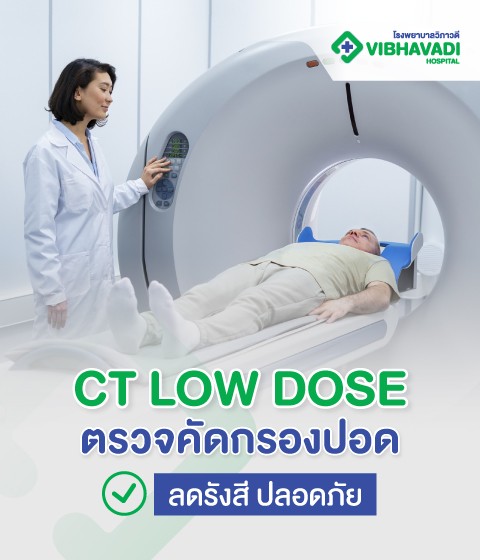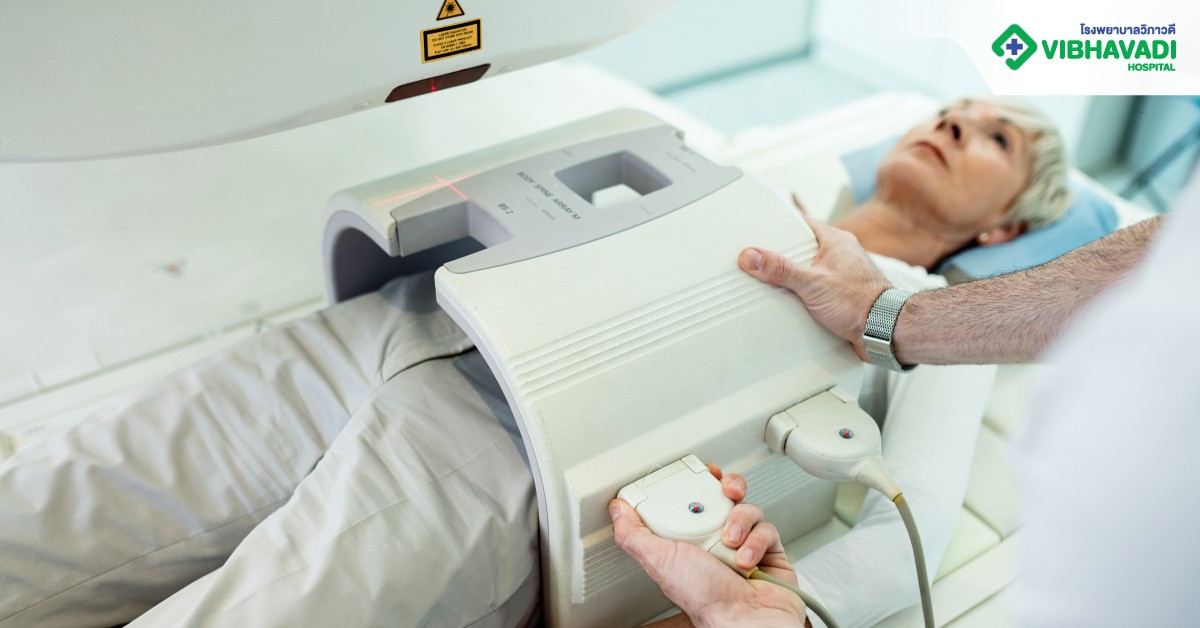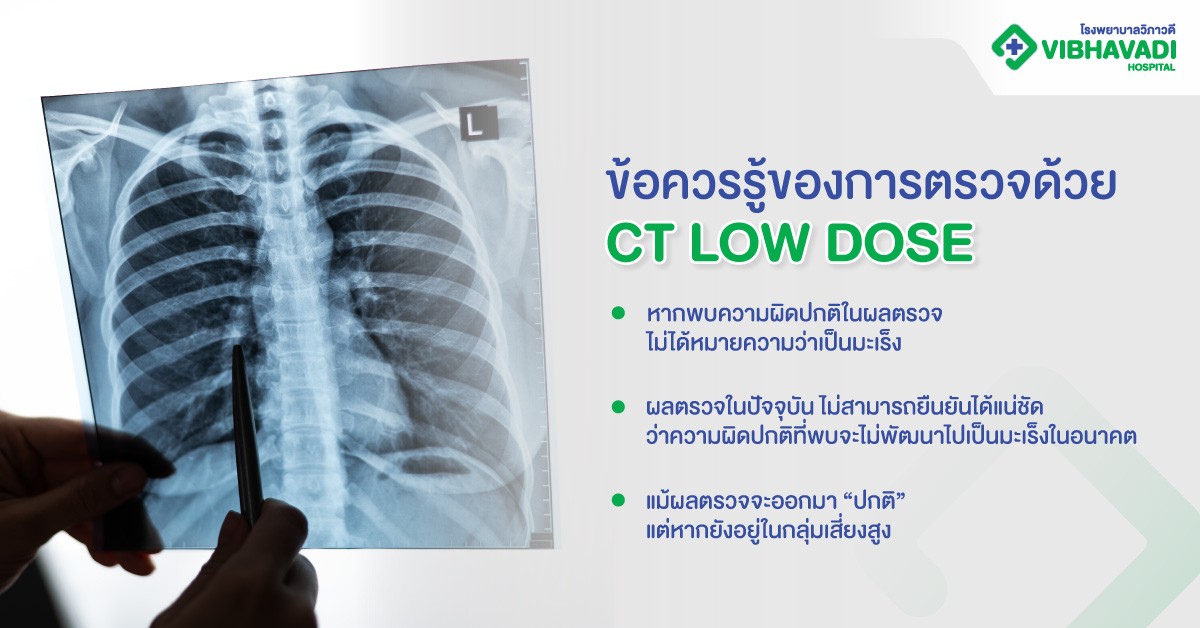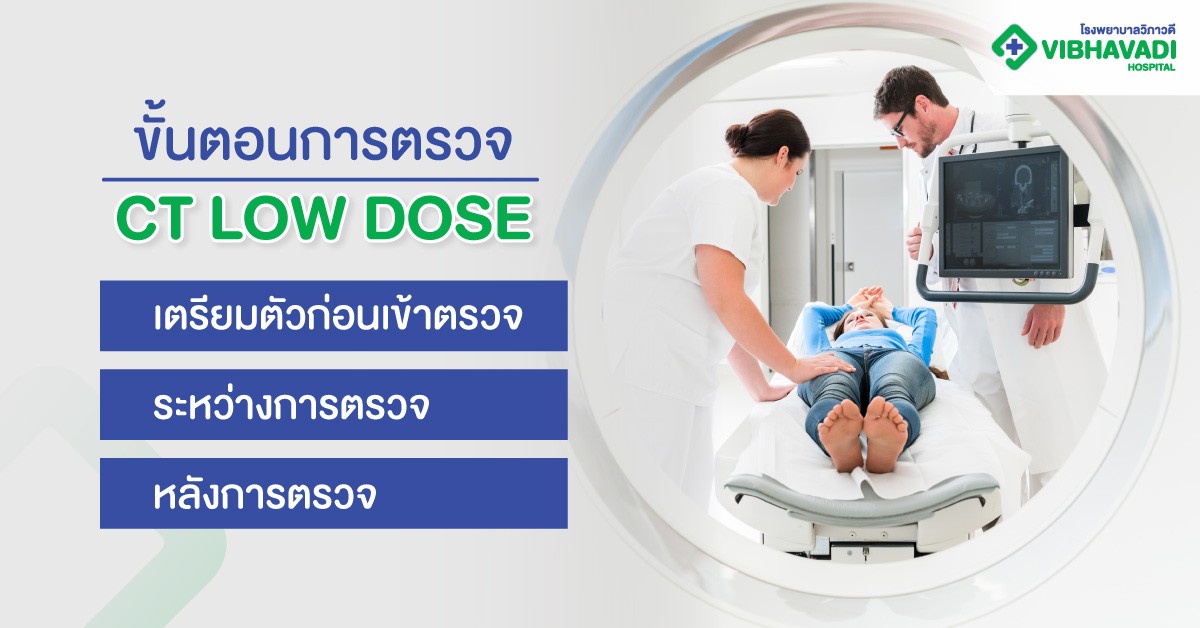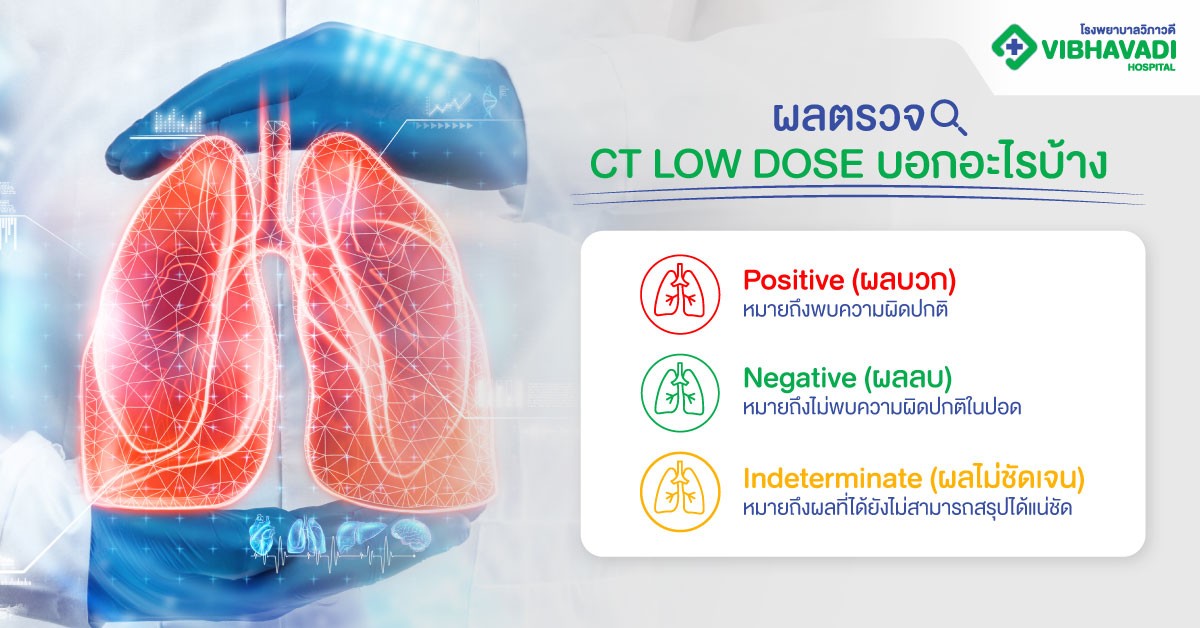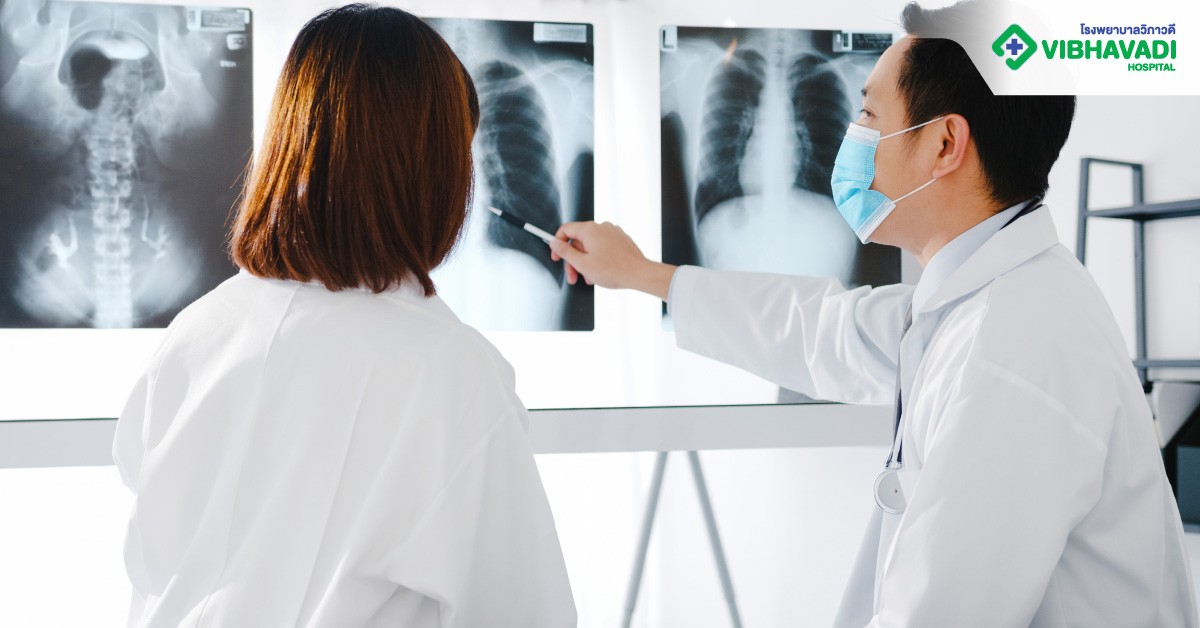CT Low Dose
CT Low Dose Lung Screening at Vibhavadi Hospital
Early Detection. Low Radiation. High Precision.
What Is a CT Low Dose?
A CT Low Dose (Low-Dose Computed Tomography, or LDCT) is a medical imaging technique that uses significantly less radiation than a conventional CT scan. It is specifically designed for lung cancer screening and early detection of other pulmonary diseases. Unlike chest X-rays, CT low dose provides detailed cross-sectional images of the lungs, allowing doctors to detect abnormalities at an early stage — often before symptoms appear.
Why Choose Low-Dose CT?
Reduced Radiation Exposure
One of the key benefits of CT low dose is that it uses up to 90% less radiation than standard CT scans while still delivering high-quality images. This is especially important for:
-
Routine screening
-
Long-term monitoring
-
High-risk individuals (e.g., smokers or those with occupational exposure)
Effective for Early Lung Cancer Detection
Research shows that LDCT can reduce lung cancer mortality by 20% in high-risk populations. The scan can detect:
-
Early-stage tumors
-
Lung nodules
-
Chronic lung diseases (e.g., emphysema, fibrosis)
-
Infection-related changes
Who Should Get a CT Low Dose Lung Scan?
High-Risk Individuals
LDCT lung screening is recommended for people who are:
-
Aged 50–80
-
Current or former smokers (20 pack-years or more)
-
Have chronic respiratory symptoms (e.g., persistent cough, shortness of breath)
-
Family history of lung cancer
-
Previous exposure to asbestos, radon, or industrial pollutants
People With These Symptoms Should Consider Screening:
-
Chronic cough lasting more than 3 weeks
-
Unexplained weight loss
-
Fatigue or wheezing
-
Coughing up blood
-
Repeated respiratory infections
How the CT Low Dose Scan Works
Overview of the Procedure
Low-dose CT uses X-ray technology to create detailed 3D images of your lungs. The scan takes only a few seconds, and the entire process is quick, painless, and non-invasive.
Step-by-Step CT Scan Process
-
Check-In and Briefing
You will be greeted by the radiology staff and given instructions. No contrast dye is needed for standard LDCT lung screening. -
Preparation and Positioning
You will lie down on the scanning table. The radiology technician will ensure you are in the correct position — usually lying on your back with arms raised above your head. -
Scanning
The table will move through the CT scanner, capturing multiple images in just a few seconds while you hold your breath briefly. -
Completion and Review
The scan is reviewed by a radiologist, and a report is sent to your physician or discussed during your follow-up.
How Long Does It Take?
-
Total time: 10–15 minutes
-
Actual scan: less than 30 seconds
-
No recovery time needed
Preparation for CT Low Dose
Before the Scan
-
Wear comfortable, metal-free clothing
-
Remove jewelry or objects containing metal
-
No fasting or medication changes required (unless advised)
After the Scan
-
Resume daily activities immediately
-
No side effects or recovery period
-
Your doctor will contact you with results or schedule a follow-up
Advantages of CT Low Dose Scanning
-
Safe and low radiation exposure
-
Highly effective in detecting early-stage lung cancer
-
Quick and painless
-
Non-invasive
-
No use of contrast (unless specified)
-
Detects other conditions such as COPD or pulmonary fibrosis
Why Choose Vibhavadi Hospital for CT Low Dose?
Advanced Imaging Technology
At Vibhavadi Hospital, we use state-of-the-art low-dose CT scanners that ensure the best balance of image clarity and minimal radiation. Our equipment is regularly calibrated to meet international safety standards.
Expert Radiologists
Our radiology team includes board-certified radiologists with experience in thoracic imaging and lung cancer screening. They provide accurate interpretation and detailed reports.
Comprehensive Care Pathway
If an abnormality is detected, we offer:
-
Pulmonary specialist referral
-
Lung function testing
-
Bronchoscopy or biopsy services
-
Oncology consultation
Related Services at Vibhavadi Hospital
-
Chest X-ray and MRI
-
Pulmonary function test (PFT)
-
Lung cancer screening packages
-
Smoking cessation clinic
-
Health check-up programs
-
Internal medicine and respiratory care
Frequently Asked Questions (FAQ)
Is CT Low Dose safe?
Yes. It uses significantly less radiation than standard CT scans and is considered safe for routine lung screening.
Is contrast dye needed?
Not for standard lung cancer screening. Contrast may be used for other types of CT scans.
How often should I get a CT Low Dose?
If you're in a high-risk group (e.g., smoker or ex-smoker), annual screening is recommended — especially for ages 50–80.
Will it detect other lung issues?
Yes. It can detect emphysema, fibrosis, infections, and even signs of tuberculosis or COVID-19-related changes.
Can I drive after the scan?
Yes. There are no sedatives or recovery periods involved.

